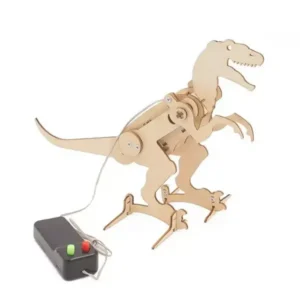Product Details
Reviews
Product Details
Objective:
Demonstrate a model of an Electric Motor to illustrate the conversion of electric energy into kinetic energy for mechanical motion.
Materials included:
Stand
Propellers
Motor
Batteries
Wires
Materials not included in the kit:
Procedure and assembly steps:
Procedure included in the kit manual . This is not a ready made product. Student needs to follow the steps to assemble the model…
Description:
An electric motor is a common device that undergoes a series of energy transformations to enable its mechanical function. Here’s an explanation of the energy transformations in an electric motor, following a similar format to the vacuum cleaner example:
Electric Motor: Conversion of Electrical Energy into Mechanical Motion
- Initial Input: Electrical Energy
- The electric motor initiates its operation by drawing electrical energy from a power source, such as an outlet or battery. This electrical energy serves as the starting point for the energy transformations within the motor.
- Electricity to Rotational Motion
- Inside the electric motor, this electrical energy is converted into mechanical energy in the form of rotational motion. This conversion is accomplished through the interaction between a coil of wire and a magnetic field, resulting in the rotation of a shaft.
- Generation of Mechanical Energy
- The mechanical energy generated within the motor is a result of the Lorentz force, which acts on the coil due to its interaction with the magnetic field. This force drives the rotation of the motor’s shaft.
- Mechanical Energy Enables Various Applications
- This mechanical energy produced by the motor can be harnessed to perform various tasks, such as driving a fan, turning the wheels of a vehicle, or powering machinery in industrial settings. The motor’s rotational motion provides the kinetic energy required for these applications.
- Efficiency and Heat Generation
- During the energy conversion process, some of the electrical energy may be lost as heat due to factors like friction. This heat generation is often a byproduct of the motor’s operation and can be managed for specific purposes, such as aiding in the motor’s efficiency or for other applications within the system.
Learning outcome:
Have a better understanding of an Electric Motor to illustrate the conversion of electric energy into kinetic energy for mechanical motion using the model built by the student in this project
Section or subject:
Physics
Grades:
8+
Reviews
Be the first to review “Electric motor – Energy transformation – Electric energy to kinetec energy conversion” Cancel reply















Reviews
There are no reviews yet.